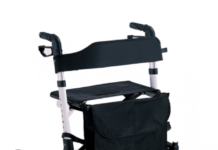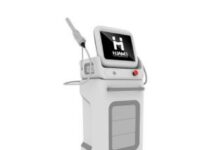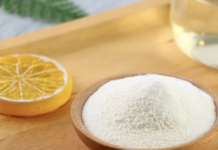Having a daily skincare routine is important to have healthy, glowy, and radiant skin. A routine involves cleaning your face, applying toner, and moisturizing it.

A skincare routine involves more than simply cleansing your face; it includes hydrating your skin, addressing specific skin issues, and shielding it from environmental factors. At a minimum, your skincare regimen should feature a cleanser, moisturizer, and sunscreen. You can incorporate additional treatments tailored to your skin type and goals, such as combatting dryness, oiliness, aging, or acne. Here is a guide to establishing effective morning and evening skincare routines tailored to your needs.
Morning Skincare Routine
Your morning skincare routine primes your skin for the day by eliminating dirt and oils built up overnight. It should also provide moisture to bolster your skin barrier and guard against UV rays and pollution. Here’s how to tailor your routine to your skin type.
Step 1: Cleanser
Cleansing your face clears away excess oil and dirt that can clog pores and lead to breakouts. Choose a gentle, alcohol-free cleanser to preserve essential oils needed to maintain a healthy skin barrier. Those with dry skin might benefit from a hydrating oil-based cleanser. When washing in the morning, wet your face with lukewarm water and gently massage a cleanser with your fingertips. Then rinse afterward and pat your skin dry with a towel.
Skin type considerations: Look for cleansers with ceramides, glycerin, or hyaluronic acid to hydrate dry skin. For oily or acne-prone skin, opt for cleansers containing benzoyl peroxide, glycolic acid, salicylic acid, or tea tree oil to manage excess oil and minimize breakouts.
Step 2: Toner
Depending on their formulation, toners can either hydrate the skin or remove residual oil and dirt. While toning can be an optional morning step, it’s especially beneficial for those with dry or acne-prone skin. To use, soak a cotton pad in toner and lightly pat it on your face. Focus on the “T-zone”, which is your forehead, nose, and chin if your skin is oily or prone to breakouts. Alternatively, you can splash toner directly onto your face.
Skin type considerations: For dry or sensitive skin, seek hydrating toners with hyaluronic acid or rosewater. Oily or acne-prone individuals should select toners containing salicylic acid or witch hazel, which help absorb excess oil.
Step 3: Spot Treatments or Acne Treatments
If you are managing acne breakouts, apply a targeted spot treatment or an overall acne treatment after cleansing or toning. If your focus is on fading dark spots (hyperpigmentation), consider using a skin-brightening spot treatment instead. Spot treatments are designed for small areas and can be used as needed.
Skin type considerations: Treatments containing benzoyl peroxide and salicylic acid are effective for tackling acne. For fading dark spots, look for serums with hydroquinone or kojic acid.
Step 4: Antioxidant Serum
A morning serum can brighten, hydrate, and protect your skin. Using a serum rich in antioxidants—such as vitamin C, vitamin E, or niacinamide—is ideal for daytime application, as these ingredients help mitigate environmental and UV damage. Apply the serum by gently tapping it on your face and neck.
Skin type considerations: Vitamin C suits all skin types, brightening the complexion and diminishing hyperpigmentation. Vitamin E and hyaluronic acid serums moisturize dry skin. If you’re seeking an antioxidant serum that combats acne and excess oil, try niacinamide (a form of vitamin B3), which also brightens skin, minimizes pores, and softens wrinkles. However, avoid combining vitamin C with niacinamide, as their effectiveness is reduced when mixed.
Step 5: Eye Cream
Eye creams, while optional, offer extra moisture and hydration for the delicate area beneath your eyes. To apply, lightly dab the cream under your eyes using your ring finger. For daytime use, select eye creams containing hydrating peptides and antioxidants like Vitamin C, along with SPF to safeguard this sensitive area from sun damage.
Skin type considerations: If you want to appear more refreshed after a poor night’s sleep, consider an eye cream with caffeine, which can enhance circulation and reduce dark circles and puffiness.
Step 6: Moisturizer
Applying moisturizer to your face and neck helps keep your skin hydrated and protected throughout the day. Moisturizers boost your skin’s water content and lock in moisture, an essential step for repairing the skin barrier (the upper protective layer of the skin). Oily skin types also require moisture to maintain balance and prevent excessive oil production.
Skin type considerations: Rich moisturizers containing ceramides, glycerin, or shea butter can effectively hydrate dry skin. If your skin is oily or acne-prone, opt for lightweight or oil-free gel moisturizers that won’t congest pores. Moisturizers with hyaluronic acid are excellent for those with oily, acne-prone skin.
Step 7: Sunscreen
To conclude your morning routine, it’s critical to apply sunscreen for UV protection. Daily sunscreen usage lowers your risk of skin cancer, wrinkles, and sunspots. Choose a mineral or chemical sunscreen with broad-spectrum protection and an SPF of 30 or higher. Apply about a nickel-sized amount to your face, neck, chest, and ears, and remember to reapply every two hours.
Evening Skincare Routine
Your evening skincare routine removes all the gunk that your face has accumulated throughout the day, cleans it, and adds moisturizer to the skin. It also helps in treating acne, hyperpigmentation, fine lines, and dry skin as you sleep peacefully. If you go to bed with a fresh face, it also allows your skin to repair itself. Here is how you can create a nighttime routine, customized for yourself.
Step 1: Cleanser
Just like you use a cleanser in the morning, you have to use one at night. It helps remove any dirt and oil your face has collected throughout the day. You can use the same oil-based, or acne-fighting gentle cleanser at night that you have used in the day. The only difference at night is that you might have to remove the excess makeup from your face. For that, use an oil-free makeup remover or double cleanse if you prefer.
Skin type considerations: If you have oily, acne-prone skin, you can use V to remove makeup. This will help you avoid clogging pores in the face. If you have Sensitive and dry skin, you can also do double cleansing with an oil-based cleanser or a balm that removes the dirt and makeup and hydrates your skin at the same time.
Step 2: Toner
Using a toner at night – splashing it on a cotton pad and dabbing it on your face surely is not necessary. However, using a nighttime toner can help hydrate dry skin or remove leftover grime after cleansing. You can also swap your usual morning toner for an exfoliating toner at night. Then, use the exfoliating toner once or twice a week to unclog pores or remove dead skin cells.
Skin type considerations: Dry skin goes best with hyaluronic acid or rose water toners that hydrate the skin at night. If you want to control oil production, use salicylic acid or witch hazel toners. For combination or normal skin, use exfoliating toners with alpha-hydroxy acids (AHAs) like glycolic acid or salicylic acid.
Step 3: Spot Treatment
Just like in the morning, you can continue using your spot treatment at night. Either apply a benzoyl peroxide or salicylic acid treatment for pimples. You can also use a hydroquinone or kojic acid treatment for hyperpigmentation.
Skin type considerations: Avoid using additional serums or retinol treatments in the areas where you have already used a spot treatment. To avoid irritation, alter nights you use spot treatments, serums, and retinol. If you have open pimples, use hydrocolloid patches at night.
Step 4: Serums or Acne Treatments
Using a serum at night or having an all-over acne treatment is optional. However, adding these to your routine can help you treat fine lines and acne. You need to make sure to pick only one to least damage your skin. When you have too many active ingredients, this may irritate you. On the other hand, some serums act as chemical exfoliators, removing dead skin cells that dull skin and clog pores.
Skin type considerations – Dry skin is best treated with a hydrating serum with hyaluronic acid, vitamin E, peptides, or ceramides. For Dry and oily skin types, AHAs like glycolic and lactic acid are appropriate as they hydrate, exfoliate, and smooth fine lines. These AHA serums can also help treat blackheads and pimples. If you have acne, you can use salicylic acid or azelaic acid serum to unclog pores and reduce inflammation.
Step 5: Retinol
Retinoids and retinol are derivatives of vitamin A that help treat fine lines and acne. The ingredients in retinoids stimulate cell turnover and promote collagen production. In turn, this helps improve overall skin texture while preventing clogged pores. Retinol along with other retinoid treatments makes your skin extremely sensitive to the sun. This is why these treatments are always used at night and you should always wear sunscreen the day after. If you are new to the retinol treatment, there is a chance that it can be irritating to your skin. So, start with a pea-sized amount every other night after consulting a dermatologist.
Skin type considerations – Sensitive skin types and people with mild acne, hyperpigmentation, or wrinkles should go for over-the-counter (OTC) retinol, retinyl palmitate, and retinaldehyde. If you have more severe acne and you want anti-aging benefits, you would need a prescription for retinoid treatments like Differin (adapalene), Retin-A (tretinoin), Aklief (trifarotene), and Tazorac (tazarotene). To treat severe acne, you can also use Differin (adapalene) OTC.
Step 6: Night Cream or Moisturizer
You can use the same moisturizer that you have used in the morning in your nighttime skincare routine, or you can opt for a heavier night cream. Using night creams will aid in repairing skin, which is why they have a thicker consistency than your regular moisturizer. Whatever you choose, it is quite essential to hydrate your skin well. So, moisturize your skin at night which will help return the moisture your skin has lost during the day.
Skin type considerations – If you have oily or combination skin, look for night creams that are non-greasy and non-comedogenic to avoid breakouts. Use creams with hyaluronic acid and glycerin to get more moisture at night. You can also use night creams with AHAs and retinol, helping stimulate cell turnover, reduce fine lines, and even out skin tone.
If you are feeling a little extra or you have really dry skin, you can go for a face oil on top of your moisturizer as well. Go for face oils with fatty acids like argan or coconut oil if you have super dry skin. People with sensitive skin can go with chamomile and rosehip oil.



















